
What Is A Transactional Email? Guide & Examples [2025]
Transactional emails are a critical part of customer satisfaction and business success. But what exactly are they, how do you set them up, and what is their difference with regular emails?
Find the answer to these questions, including the top transactional email types a business should consider adding to their strategy. Get inspired by examples from notable brands and learn how to set them up and send them.
What Is a Transactional Email?
A transactional email is an automated message sent in response to a user action on a website or application. Users usually expect to receive these emails to confirm their action is completed. They may even refresh their inboxes until those email messages arrive.
Some of the most popular transactional messages include account creation, password reset, order confirmation, and welcome emails, to name a few.
Moreover, due to their important content, these emails tend to have higher open rates than most email marketing campaigns. They have all the information a user needs to double-check after completing an action, making them critical to sustaining customer relationships.
Want to reduce support tickets?
Set up automated messages, like password resets and order confirmations.
Try MoosendTransactional Emails Vs. Marketing Campaigns
So transactional emails are personalized messages sent after a triggered action (e.g., when customers make a purchase, or reset their password) and contain data or content specific to the user that completed it.
Marketing emails, on the other hand, are mass distributions of the same message to multiple recipients. Also called promotional or bulk emails, they are meant to nurture your leads, get them to take action, and move them a step further down your marketing funnel.
Common types of marketing emails include:
- Newsletters
- Sales campaigns
- Special offers
- Event announcements
- Giveaways and vouchers
Most businesses rely on a combination of transactional and marketing emails to connect and establish a relationship with their audience. What’s more, some platforms like Moosend and Postmark allow you to send both transactional and marketing emails from a single platform.
However, many businesses choose to promote certain marketing or sales activities on their transactional emails to benefit from the high open rates they receive. For instance, they can add discount codes on welcome emails to convert new subscribers while their interest is fired up.
Keep in mind that there are different email sending laws across countries. For example, GDPR regulations do not require an opt-in to send transactional emails, but if you combine them with commercial initiatives you need to follow the rules.
Why Do You Need Transactional Campaigns?
When customers make changes to their accounts or purchase a service or product, they usually expect confirmation. Sending them transactional messages will keep them up-to-date and deliver valuable information necessary for a smooth customer journey. What’s more, you eliminate their stress and increase trust in your brand.
Additionally, transactional messages reduce the number of customer support tickets and provide amazing digital customer experiences with your brand.
Types Of Transactional Emails & Examples
Transactional emails are a vital part of most online businesses’ email strategy (especially for eCommerce). However, these messages are often underestimated despite their key role in facilitating a smooth customer experience and retention.
It’s good to remember that even though their main purpose is operational, they carry valuable information and reflect your brand. Therefore, you need to design them carefully.
Let’s explore the most relevant email types and some common examples of transactional emails a brand needs to set up. You can also use some of these premade transactional email templates to get started.
1. Email Address Confirmation
Confirmation emails should be high on your priority list. While your audience can join your list without verifying their email address (single opt-in), having double opt-in in place will help you:
- Maintain good list hygiene
- Improve your email deliverability
- Avoid having spam addresses
These campaigns are perfect for keeping track of who joins your mailing list and increasing your overall open, click-through, and conversion rates.
Here’s a great example by Red Bull:
Subject line: Please confirm your newsletter registration

After users sign up for its email newsletter, Red Bull automatically sends a transactional email to confirm their subscription.
This transactional campaign has all the right elements to encourage new subscribers to act. From the bright call-to-action to the first-time discount voucher, this email is both effective and enticing.
2. Account Creation
Account creation emails are among the most common messages that eCommerce and SaaS businesses send out.
These campaigns are triggered right after a potential customer creates a new profile. Marketers can use these transactional emails to welcome new users, give them incentives, and even invite them to join their loyalty program.
Check out this example by Tease:
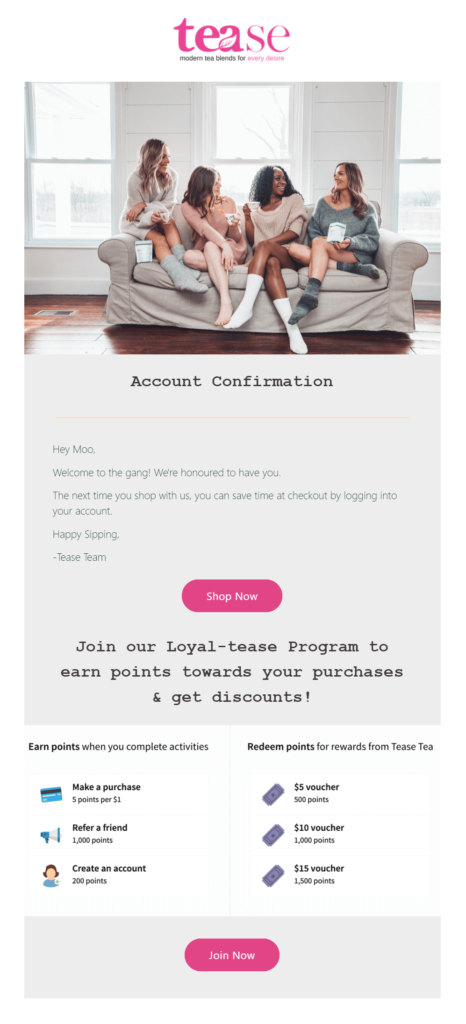
This account creation email lets new customers know that they have successfully created a new account. Not only that, but the brand also grabs the opportunity to welcome them on board, informing them that they can save time at the checkout simply by logging in to their profiles.
The pink CTA is also a nice touch, standing out in the background. Apart from that, you can also see how Tease promotes its loyalty program by highlighting the benefits of becoming a member.
Ready to set it up? Feel free to use this premade HTML template to amaze your new subscribers:

3. Welcome Email Campaigns
After someone signs up for your newsletter or an account, you need to make a great first impression. As we saw, when we analyzed some of the best welcome email campaign examples, you should:
- Be friendly and have personalized content.
- Provide valuable information.
- Include a straightforward CTA.
Also, keep in mind that your welcome automation workflows need to be triggered at the right time to engage your audience and offer valuable information the moment they need it. Here’s an example by TOPOL:
Subject line: Welcome to TOPOL.io

TOPOL’s welcome message is simple and straightforward, with a bright yellow CTA that’s hard to miss. As you can see, the SaaS company gives new users information about their trial status and a checklist with all the cool things they can do.
Of course, extra elements like the “contact us” link and the account manager’s personal email address are a great way to give new users a direct communication line with your company.
Having trouble with your welcome messages? Check out these welcome email templates to capture your audience’s attention and lead them closer to conversion. Then, hop onto our platform and create yours.
4. Password Reset Emails
Let’s be honest, we’ve all forgotten our passwords at least once. When this happens, users will click on the “Forgot password” option and wait for the magical change message. Effective password reset requests should:
- Be clear and to the point.
- Include a password change link.
- Assure users that their password hasn’t automatically changed.
Password reset emails are among the most crucial transactional emails your business needs to set up. To avoid unnecessary emails to your support team, you could even let customers know when the password reset link will expire.
Here’s what these emails look like with an example by Spotify:
Subject line: Reset your password
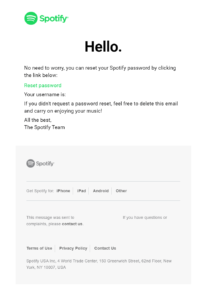
Spotify’s password change email is everything the subscriber wants to see. The green “Reset password” hyperlink stands out, while the email copy is short and straightforward to avoid confusion. Moreover, the company reassures the recipient that they can delete the email if they didn’t make the request. Finally, the email has clear branding, so it’s recognizable by the user.
Remember that these campaigns need no fancy subject lines to get high open rates. Your subscriber will instantly open them and take action when they see them.
5. Order Confirmation Emails
If you have successfully managed to convince your audience that your product/service is worth their time and money, they’ll eventually make a purchase.
What’s the next thing they expect to see in their inbox? An order confirmation message to let them know that the transaction has been successfully executed. Order confirmations are necessary for all businesses that want to keep their customers stress-free about whether their payment has been received or not.
Let’s see how Udemy executed it:
Subject line: Order Confirmation for March 31, 2021

Udemy’s transactional email shows you exactly what you need to know about your recent purchase. You can check the list price, your price (which in our case was free!), the tax, credits, and the total.
What’s more, this email doesn’t have any promotional messages since they are unnecessary. The CTA is focused, prompting learners to start their new course at once. On top of that, the online course platform has come up with an effective subject line to show customers what the email is about, even adding a date to make it more specific.
Feel free to customize this transactional email to nudge your customers when their order is ready:
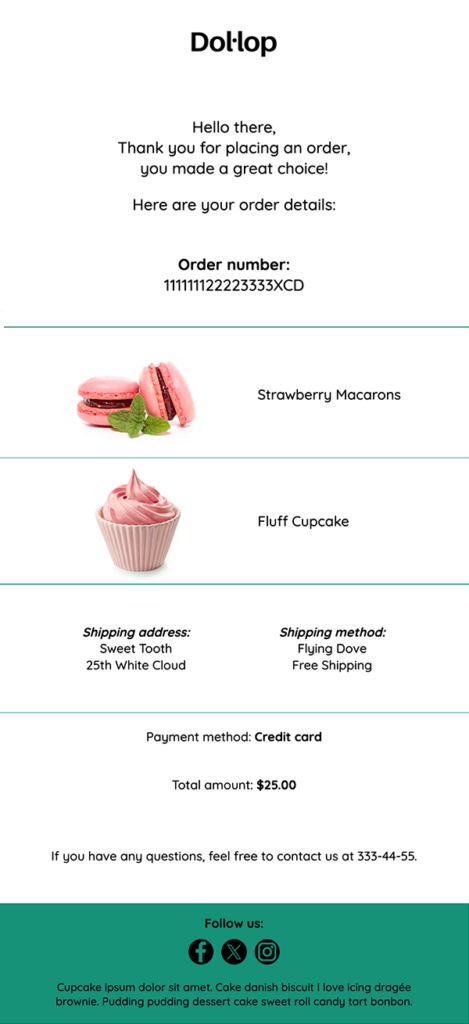
6. Purchase Receipts
During Covid-19, many retailers and hospitality services had to take their businesses online. As a result, some of them started sending customers e-receipts.
These purchase receipts are perfect for informing your buyers that you’ve received their payment and reassuring those who might be worried that you’ll hold up your end of the transaction. Here’s an example by Home Depot:
Subject line: Your Electronic Receipt
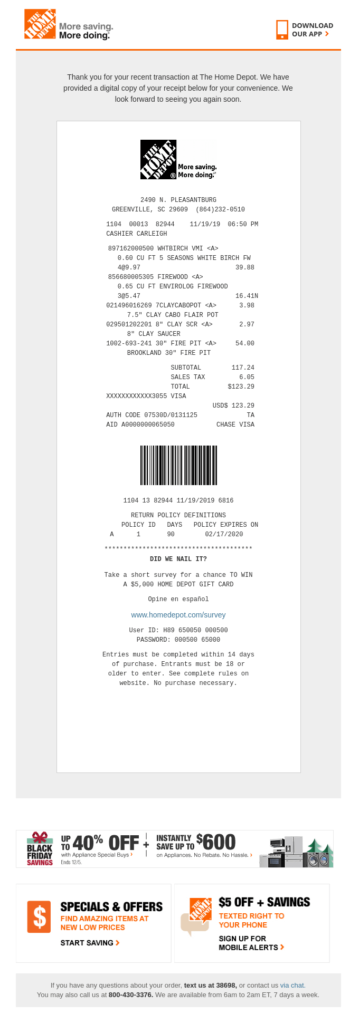
Home Depot has taken your traditional receipt and turned it into a brilliant email. Customers can access the digital copy anytime they want, print it out, or save it.
What’s more, using transactional messages like this is convenient not only for your buyers but also for the environment. So if you want to promote an environmentally friendly business, using e-receipts might help you out more than you think.
7. Account Notifications
Of course, account notifications couldn’t be missing from our list. These emails are extremely helpful for people who want to keep track of their account activity.
This transactional email type needs to be short and to the point, functioning as real-time updates. Explore how Amazon did it:
Subject line: Updated Language Settings
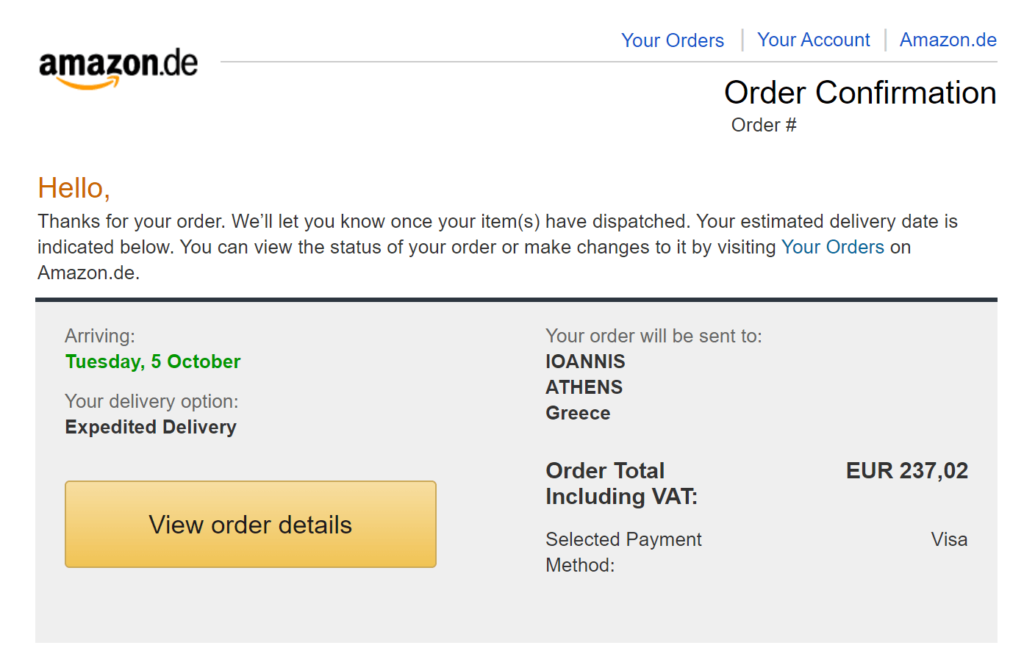
This campaign is triggered after changing the language settings of your Amazon account, informing the recipient about the update and providing additional information. This is just a small sample of how the company uses notification emails to keep customers updated about everything happening on their profiles.
Other transactional messages that Amazon sends out regularly include sign-in attempts, information update requests, thank you emails, and so on.
8. Shipping Notifications & Updates
When your customer base makes a purchase, they look forward to receiving that one email that’ll give them more details about shipping.
Shipping transactional emails need to have all the right information to keep your customer updated. A broken tracking link or insufficient details will result in them reaching out to your customer support team and have a negative impact on their experience with your brand. This is shipping confirmation email by Redbubble:
Subject line: Your order has been printed & shipped.
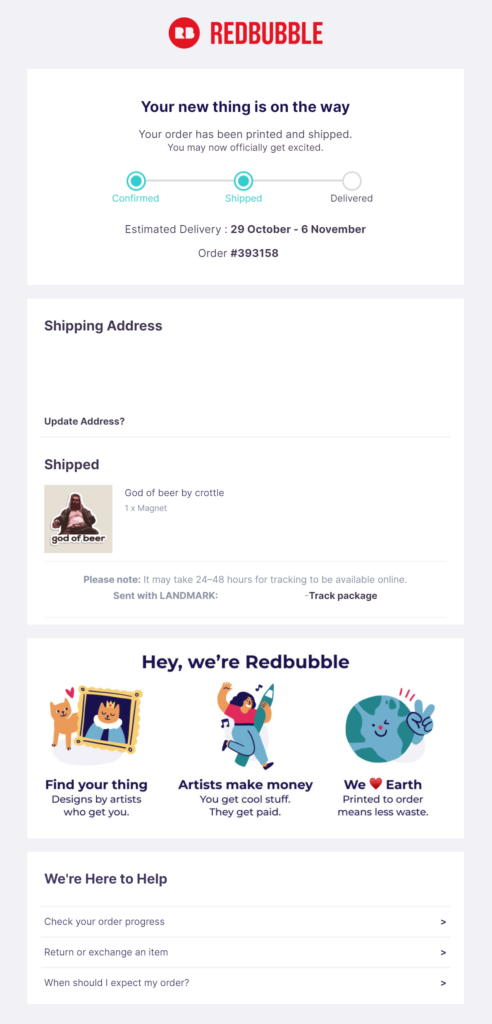
Redbubble steps up its shipping confirmations using a beautiful email design and visuals. While not necessary, the brand makes sure to provide a great customer experience, pleasing the buyer’s eye and giving them everything they need to know about the shipment.
Also, one of the best things about this example is the little FAQ section at the bottom. This way, Redbubble aspires to minimize friction and be helpful before customers get to open a ticket.
9. Subscription Renewal Email
Most businesses that offer their services with a subscription model nudge their customers as the expiration date approaches to keep their churn rate low and steady. The same can happen with free trials to move these leads down the funnel.
If you belong in that category, you need to set up subscription renewal emails to help your customers keep their service and benefit both ends. If the renewal is automated, you can also create renewal notification emails to inform them that their subscription is still up and running.
Here’s an example by Apple Music:
Subject line: Your Apple Music membership is almost up.

This email by Apple sets expectations straight from the subject line. They added an image of a woman enjoying the app to remind the customer of the joy of using this app. Plus, they chose a clever call-to-action button that would lead subscribers to activate automatic renewal before the expiration date.
Need a template to craft your own subscription renewal emails? This one’s for you, with a countdown timer to create a sense of urgency:
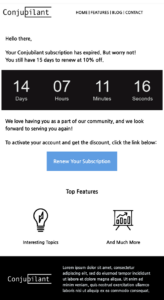
10. Social Media Event-Triggered Notifications
Almost everyone has at least one social media account these days. For big social media networks like Facebook, X, and LinkedIn, keeping users up-to-date with what’s going on is a must.
To do it, these platforms tend to deliver event-triggered notifications when users take specific actions on their profiles. Let’s see what these transactional emails look like:
Subject line: Mac Walters Tweeted: So looking forward to this…
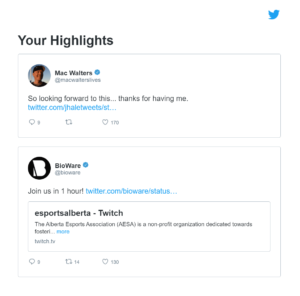
These notification emails from X are common. To receive them, users need to have enabled notifications for a specific account or follow certain tags. Also, while your brand has no say in these messages, they are perfect for your social media marketing strategy as they help your audience keep track of what you post and lead them back to your profile.
So next time you create a post, why not prompt your followers to enable notifications for better engagement?
How To Send Transactional Emails with Moosend
Transactional emails require something more to get delivered compared to promotional emails. You can either set them up via API or use an SMTP server (Simple Mail Transfer Protocol), i.e., a TCP/IP protocol to send, receive and relay messages.
To deliver these campaigns to your target audience, it’s best to get an email marketing service like Moosend or Mailchimp. While some email service providers (ESPs) allow you to send these emails on free plans, they have certain limitations that aren’t ideal for growing businesses.
Moosend’s platform is equipped with the right tools to help you deliver your transactional emails no matter what. It’s up to you to decide how to set up those messages to get the best possible results.
For example, if you have large email lists and need a scalable solution to streamline a dedicated strategy, you can request an add-on to access transactional emails via API. On the other hand, the SMTP solution is more affordable and easier to set up on your own, but it’s mainly for small businesses with fewer transactional emails to handle.
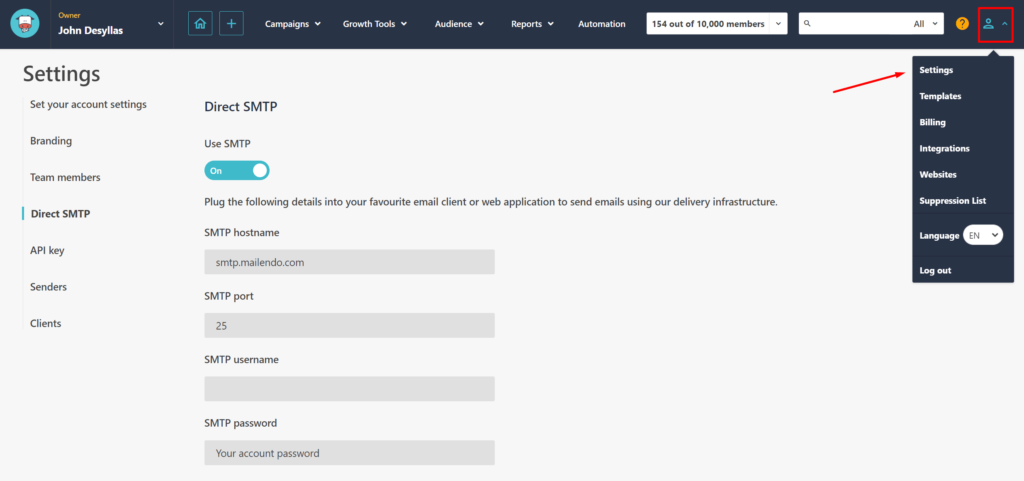
To access transactional emails, you need a paid Moosend plan. Sign up for an account and get access to the editor to craft the emails using one of our templates or create yours from scratch.
Create The Best Transactional Email Messages Today
Transactional campaigns have always been there, giving customers immediate access to valuable information. Whether you have an eCommerce business, a retail store, or a SaaS company, sending these messages will improve the customer journey and build trust with your audience.
So find a transactional email service that suits your needs and create emails that provide all the information your customers look for to reassure themselves.
Frequently Asked Questions (FAQ)
Let’s see some common transactional email questions and their answers.
Q1. Do I need to add unsubscribe links to transactional campaigns?
Operational transactional emails don’t need to have an unsubscribe link, as they’re not subject to GDPR rules or the CAN-SPAM act. However, if you combine them with commercial initiatives, such cross-selling/upselling, you need to add one.
Q2. Are bulk emails the same as transactional messages?
No. Bulk emails are sent to multiple recipients at once for promotional purposes. Popular bulk email examples include newsletters and coupons. On the other hand, transactional emails are event-triggered, such as confirmation emails, shipping notifications, etc.
Q3. Are abandoned cart emails transactional?
While they feel like transactional campaigns, cart abandonment emails are more on the marketing side. To set them up, you’ll need a marketing automation tool like Moosend or Mailchimp.
Q4. How can I send a transactional campaign?
To deliver transactional messages, you need an email API or SMTP server solution. The market offers a plethora of transactional email services to deliver your campaigns. Among them, Moosend offers both options.
Q5. How do you write a transactional message?
Transactional campaigns need to focus on the information the recipient wants to see. Give your reader a clear CTA to get the job done and ensure that your subject lines are as clear as possible to communicate the content of the email at first glance.
Q6. How can I improve the deliverability of transactional emails?
You can follow certain email best practices, such as implementing email authentication by using protocols like DMARC, creating a BIMI record, using separate IP addresses for transactional and marketing emails, and tracking their performance on a regular basis.

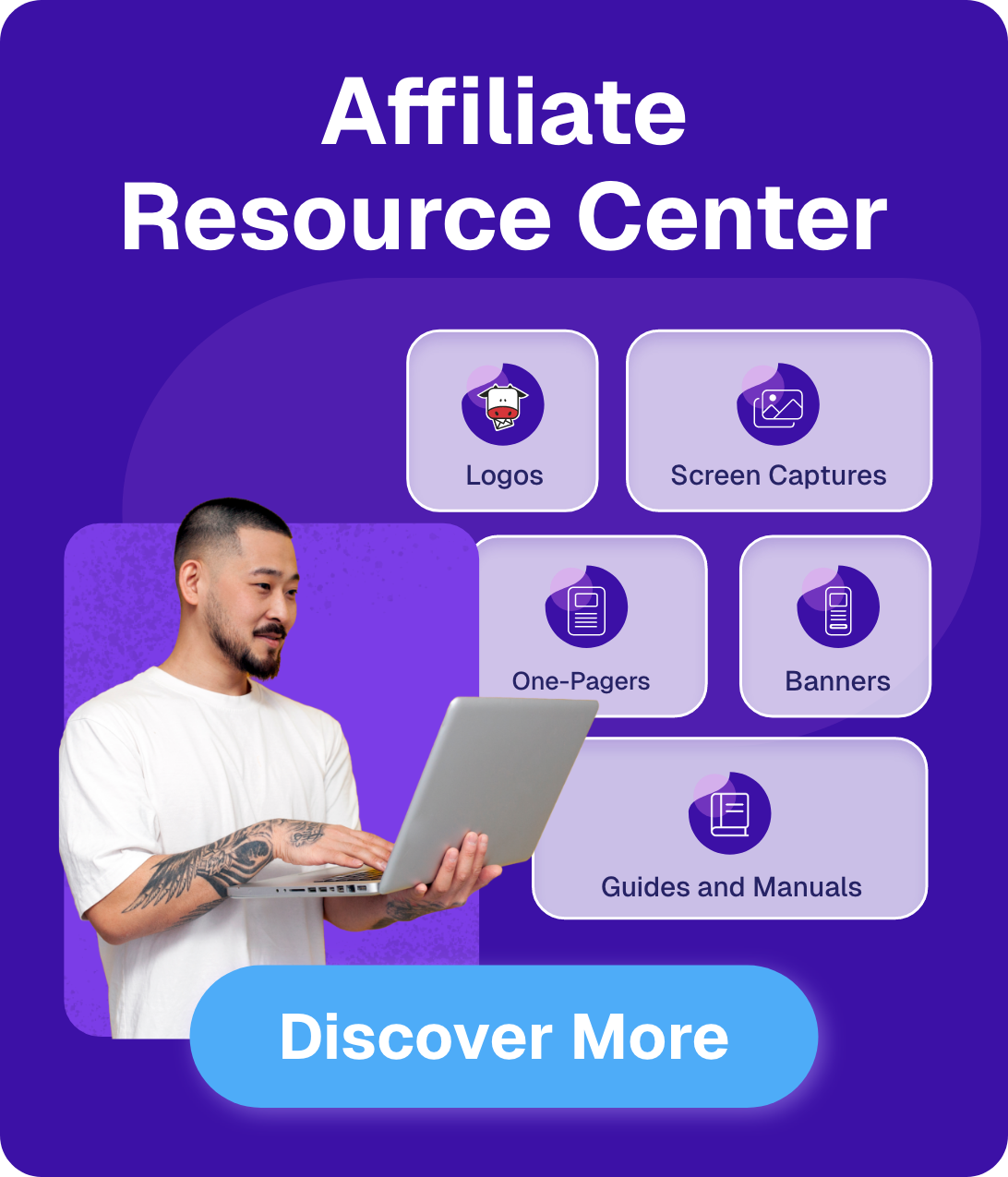

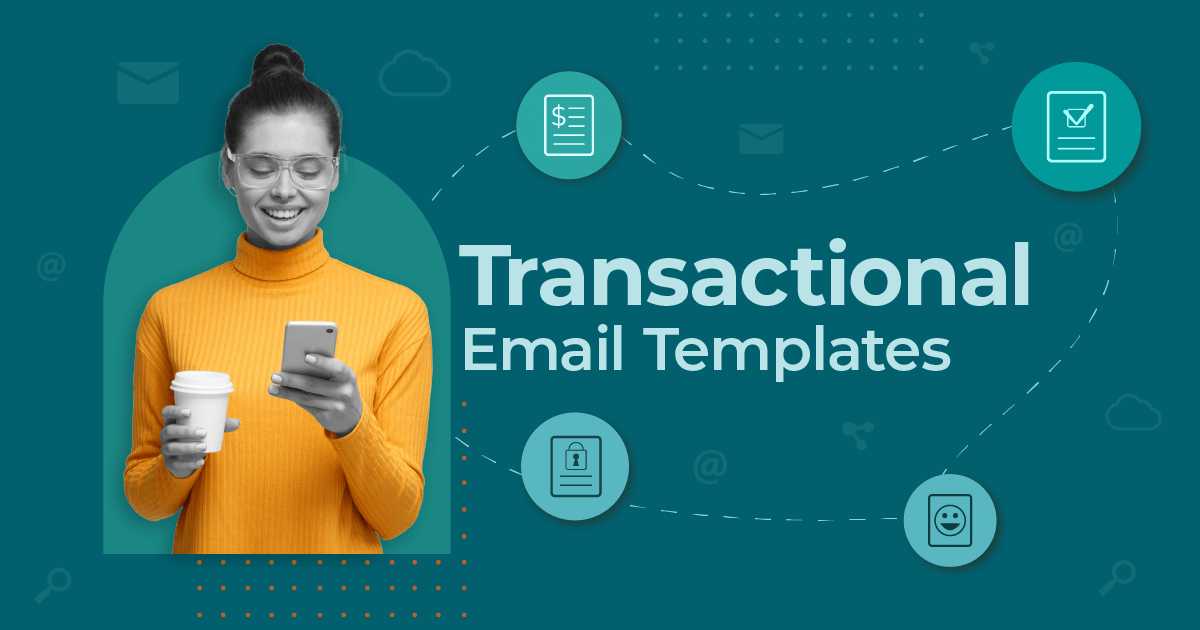
 Published by
Published by
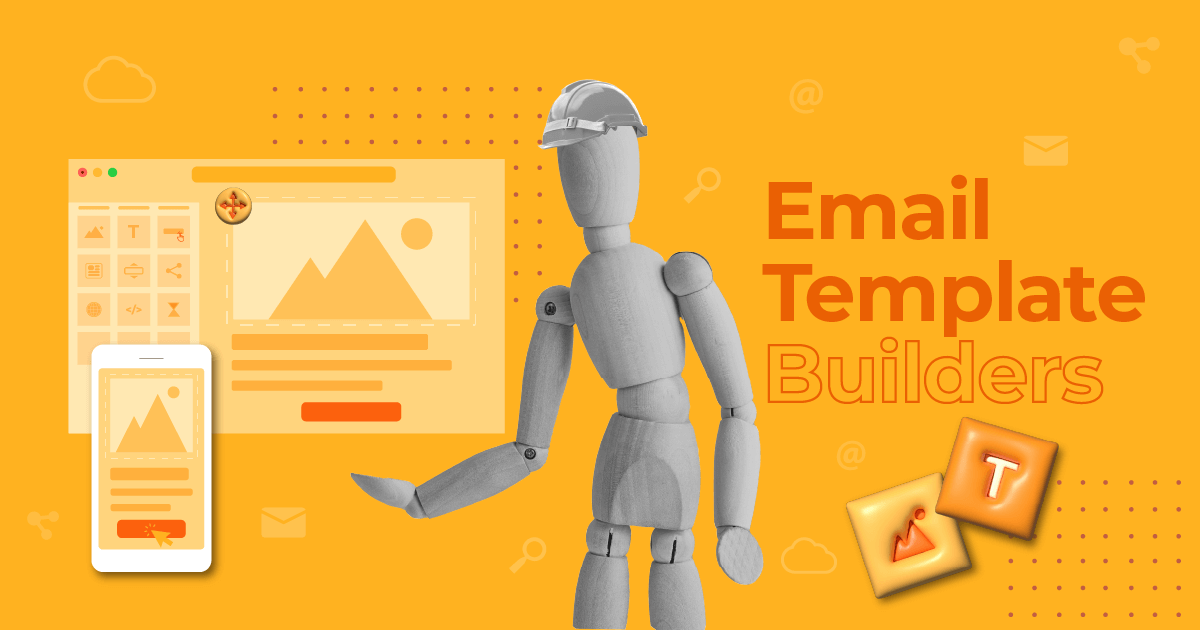
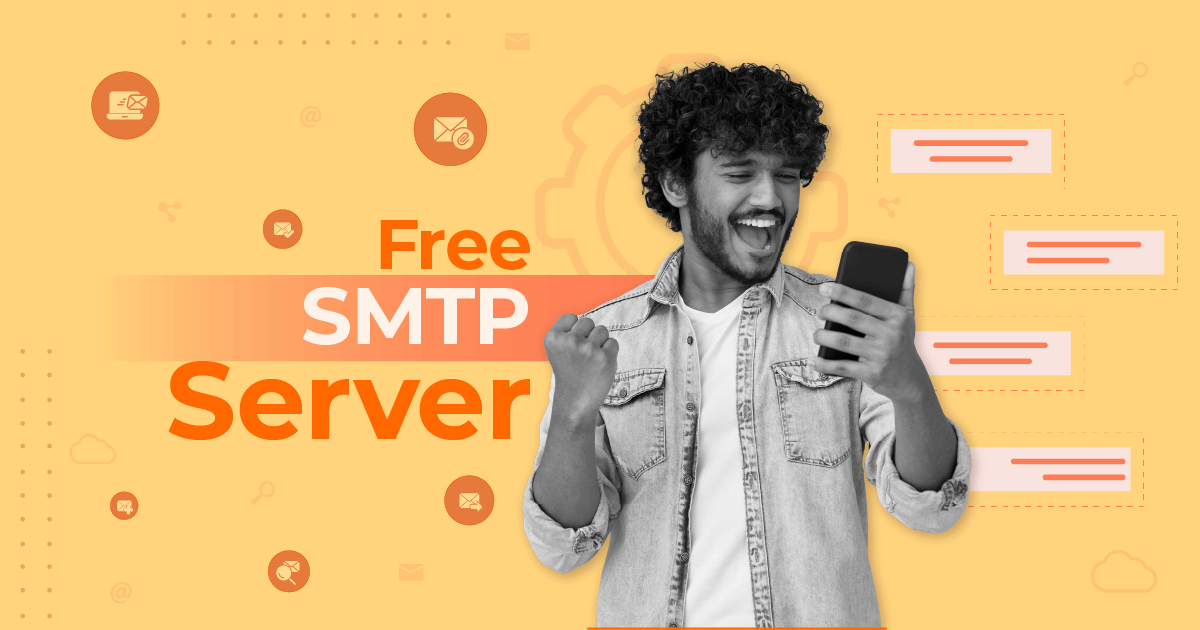
 Published by
Published by